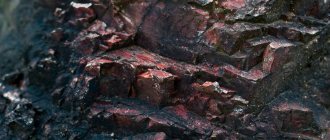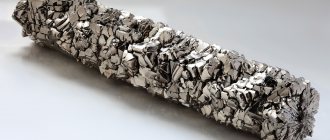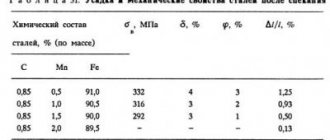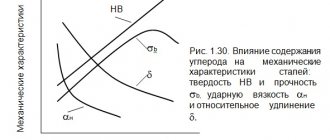Nickel ore was known even before its official discovery. During the 17th century, copper ore was actively mined in what is now eastern Germany. Together with it, another rock was often found in deposits - despite similar properties, all attempts to process it into copper ended in failure. The only use for the mineral was found in glass production, as a dye.
Because of this, the miners nicknamed the then useless ore Kupfernickel - from the words kupfer (copper) and nikkel (deceptive, mischievous, two-faced). For a long time the breed was considered second-class. In the 18th century, thanks to the development of mineralogy, the ore attracted the interest of researchers. In 1751, the Swedish specialist Kronstedt began studying its properties.
During his experiments, he managed to restore an unknown metal from the oxide, which had characteristics similar to iron. The purified substance was silvery-white, hard and plastic. Due to its established name, it has been described as nickel.
Nickel properties
In the course of further research, it was possible to establish other properties of nickel, thanks to which it became widespread in industry. This was facilitated by its wide distribution in deposits around the world - mineralologists and chemists from different countries contributed to the study. Due to this, soon after the element was officially described, its characteristics were well known.
Metal
As a mineral mined together with ore, nickel was of interest primarily as a metal. It has standard parameters:
- characteristic shade and shine;
- occurrence in mineral-containing rocks - sulfides and silicates;
- susceptibility to oxidation;
- hardness and strength.
Nickel is considered a heavy non-ferrous metal, along with copper, lead and tin.
Physical
One of the main characteristics that was established in the first years of discovery and research is the high ductility and malleability of nickel. Other characteristics were also established:
- attracted by a magnet (ferromagnetic);
- high heat resistance;
- high corrosion resistance;
- thermal conductivity, which decreases when heated;
- melting point - 1455 °C;
- specific electrical resistance 0.0684 µOhm.
Its properties make it possible to use nickel in the production of stainless steel and reagents. Also, due to its heat resistance, it serves as the basis for alloys for the aerospace industry.
Processed product
Steel and alloys
Due to its unique properties: ductility, heat resistance, resistance to chemical influences and non-reaction with oxygen, the metal is highly valued by metallurgists. Most of the nickel produced is used to make stainless steel.
Quite a significant amount is used to produce alloys with copper, iron and chromium. It is they, due to their heat resistance, that are widely in demand in the production of gas turbine and jet plants in aircraft manufacturing, rocket science, astronautics, and nuclear energy.
We should not forget about such an important process as nickel plating of surfaces, which is used to protect surfaces and give them a characteristic appearance.
Cobalt is used to alloy steels, which significantly increases their hardness and strength. It is these grades of steel that are used for the manufacture of metal-cutting tools.
Devices for the chemical and food industries
Nickel steel, which is heat-resistant and does not corrode for a long time, is widely used in the chemical industry. A significant number of tanks, tanks, boilers, crucibles, pipes, machine parts and mechanisms used in the industry contain this amazing metal. Containers for chemical reagents are produced from it. In addition, the mineral itself is often used as a catalyst for chemical processes.
Also, materials containing nickel are used in the manufacture of containers for storing and processing a significant amount of food products.
Equipment for nuclear power plants
Modern nuclear power plants contain iron- and nickel-based alloys in their reactor vessels and piping. Nickel-based superalloys have also been used as materials for equipment in nuclear power plants. They are commonly known as:
- Inconel – nickel-chromium heat-resistant alloy,
- Hastelloy is an alloy with high corrosion resistance.
Radar devices
Products made of nickel and its alloys are widely used in the manufacture of instruments and electronic components:
- Nickel pipes are widely in demand in navigation devices, remote control systems, and television.
- Nickel alloys are used in the construction of antenna units, satellite communication devices and in the manufacture of telecommunication elements.
Classification
Depending on the needs of a particular industrial application, nickel of one grade or another is used. They differ in metal content and type of raw material.
- Primary nickel. It is characterized by high content - 99.99 and 93.93% for brands HO, H1. It is obtained during electrolysis and produced in plates or strips. It can also be obtained during remelting or refining - in this case it is supplied in ingots, trimmings or granules. Marked with numbers from 2 to 4.
- Semi-finished. It consists of sheets, rods, wire. According to the standard, the nickel content is also high, comparable to primary, but it is already marked with the letters NP. Can be produced in rod form (anodic nickel, grades NPA1 and 2).
- Modifications of anodic grades on the surface of which a film does not form. It is classified as non-passivable and has a special designation - NPAN.
Also, flint or manganese may be added during the production process. Usually comes in wire form. The added elements are included in the labeling - NKO and NMC, respectively.
In some industries, the use of nickel with better characteristics is unjustified and results in unnecessary costs for raw materials and manufacturing of products. Therefore, for the manufacture of conventional alloys and workpieces, more inexpensive varieties are used.
Nickel ore processing technology
The technology for processing nickel ores is complex and multi-stage. Sometimes some of the raw materials have to be returned to previous stages of the process. To a large extent, it is determined by the percentage of the desired mineral in the feedstock.
So:
- nickel-rich ores (over 1% of the composition) are immediately sent for smelting;
- the poorer - ordinary people - are enriched;
- silicate ferruginous ores undergo hydrometallurgical processing;
- silicate magnesium ores are used for pyrometallurgical processing;
- There are also complex combined schemes with which oxidized and mixed ores are processed.
To nickel
In order to obtain nickel from ore, the initial raw material goes through a number of processing stages:
- First of all, the ore is cleaned of moisture and rottenness. To do this, it is crushed, then dried and sintered in ovens.
- The fluxes and gypsum obtained as a result of the first stage are diluted with coke and the entire resulting mass is melted into matte (an intermediate metallurgical product).
- As a result of smelting, matte and slag are formed. The slag is sent to the dump. And the matte is blown in a convector.
- After this, white nickel matte and again slag are obtained, part of which is again sent for smelting, and the other part is used to produce carbon monoxide.
- The white mass, containing a significant amount of nickel, is again crushed and ground, and then sent for firing.
- Nickel oxide is reduced using charcoal.
- The final stage in obtaining the desired chemical element Ni is electrolytic refining.
Nickel
To cobalt
To obtain cobalt from nickel ores, they are first dissolved with sulfuric acid, ammonia or water. Pyrometallurgical processes are sometimes used.
Cobalt hydroxides are then obtained using chlorine compounds or cobalt is isolated at cathodes using electrolysis using electrolysis. To obtain high-purity metal, the solution is first thoroughly cleaned of impurities: copper, iron, lead and nickel.
Metal mining in different countries
Nickel is distributed throughout the world, like iron, silicon or magnesium. Despite the abundance of deposits on every continent, countries with a developed industrial complex are becoming the leaders in production. This is due to the peculiarity of processing the original nickel-containing ore to obtain the metal in its pure form.
A metal suitable for production cannot be found on its own; to obtain it, it is necessary to process sulfates, silicates and oxides. It is most rational to locate enterprises in close proximity to the mining site. For example, despite the abundance of deposits in Cuba, the country is not among the leaders in production.
The largest enterprises are:
- Russian Norilsk Nickel - a fifth of world production;
- Canadian company Vale Inco Ltd;
- Chinese Jinchuan Group Co. Ltd;
- Australian corporation BHP Billion.
Smaller amounts are mined in Brazil, Greece, and Ukraine. The number of discovered and operating fields around the world is more than 400.
In Russia, deposits are concentrated in the Taimyr district, the Urals and the Murmansk region. Mining work began in the 19th century, during the period of development of metalworking. The first mines were opened in the Middle Urals, also during the development of copper deposits. It was believed that the main deposits of nickel-bearing ore were located there - this was facilitated by the discovery of several more large veins.
During the intensive development of proven resources, reserves were depleted. At the end of the century, nickel mining in Russia was in decline until the development of new deposits began. Early in the next century, new geological exploration techniques made it possible to discover nickel in other areas. In the period from 1933 to 1942. Several large enterprises were launched, regularly supplying batches of processed nickel for industrial needs.
Large deposits of Eastern Siberia
Berezovskoye deposit of siderite ores (south of the Chita region), explored ore reserves of 438 million tons, iron content 36.6-50.6%. Design capacity is 10 million tons of ore per year. Development rights were sold in 2005 to China.
Bakchar iron ore deposit (Tomsk region), balance ore reserves of 90 billion tons. Development rights belong to the administration of the Tomsk region.
Elga coal deposit (Republic of Yakutia), balance reserves of 2.1 billion tons of coal, estimated value - $75 billion. Development rights belong to Elgaugol OJSC, development is not underway.
Denisovskoe coal deposit (Republic of Yakutia), proven reserves of coal are 66 million tons. The rights to develop individual areas belong to the Evraz Group.
Kholodnenskoye polymetallic deposit of lead and zinc (Republic of Buryatia), proven reserves of lead and zinc 334 million tons, promising reserves 185 million tons. Development rights belong to.
Ozernoe zinc deposit, proven reserves 104.96 million tons, promising reserves 23.2 million tons. Development rights belong to.
Udokan copper deposit (Chita region), copper reserves of 20 million tons (58% of Russian copper reserves) with a copper content of 1.5% in ore. The approximate estimate of the necessary investments in development is $1.5 billion. The auction is scheduled for 2006, after the approval of amendments to the law “On Subsoil”. The contenders for the deposit are MMC Norilsk Nickel, UMMC, RMK, Phelps Dodge.
Elegest coal deposit (Republic of Tuva), reserves are estimated at 1 billion tons. Investment estimate - $1-1.1 billion over 5-6 years. The start of production is planned for 2006. The development rights belong to the United Industrial Corporation.
Types of deposits
One of the parameters affecting the volume of ore production and processing costs is the type of rock. Despite the identical properties of pure metal, the process of its formation in nature varies. Nickel ores include:
- Copper-nickel ores, sulfides. The predominant type that requires the least amount of energy for processing. Distributed throughout the CIS and Canada.
- Silicates, cobalt-nickel. Located in Indonesia, Cuba. It was also in this form that nickel was mined at the beginning of the development of domestic mining - in the Middle Urals.
- Copper-pyrite and sulfide-arsenide ores. They are considered secondary, since nickel is not the main substance during mining.
Large quantities of nickel reserves also lie on the ocean floor. Therefore, potential leaders also include countries that have resources and access to the appropriate extraction method. However, the amount of nickel reserves on land remains so large that the unnecessary costs of such methods are considered impractical.
World reserves
Data taken from different sources are very contradictory and differ greatly in terms of years, mineral content, as well as in the level of confirmed reliability by expert services.
The identified resources of nickel ores are estimated at 190-210 million tons. Of these, most of them have a nickel concentration of over 1% (130 million tons), a smaller part with a concentration of 0.2-1% (80 million tons). Huge deposits of this unique mineral are located at the bottom of the world's oceans (almost 700 million tons), although they have an average concentration of this mineral.
It is difficult to say which country has the largest reserves of nickel ore. One thing can be said with a fair degree of confidence that the list of leaders (countries with more than 5 million tons of deposits of this resource) includes: Australia, Brazil, Indonesia, Canada, Cuba, Russia, New Caledonia. The following countries also have significant reserves (more than 1 million tons): Albania, Greece, the territory of the former Yugoslavia, Ukraine, Kazakhstan, Guatemala, Colombia, Burkina Faso, Burundi, Ivory Coast, Madagascar, South Africa, China, the Philippines, Papua New Guinea.
Cobalt
World cobalt reserves are estimated at approximately 500 million tons, of which proven reserves in 2005 amount to almost 13 million tons.
Nickel mining methods
Deposit development is carried out using several methods. The choice is related to the type of ore as well as production costs.
- Open method. It is a quarry. Using machines, ore is extracted from stepped walls, after which it is transported to the surface using excavators and dump trucks.
- Closed. Occurs at a depth of a kilometer or less. It is characterized by a greater degree of danger and large expenses for machinery and equipment.
- Mining from the seabed. The most expensive method, with limited processing capabilities at the extraction site.
Mines and wells are installed in places that contain associated minerals with beneficial properties. This allows you to recoup production costs. The optimal method of extraction remains a conventional quarry.











